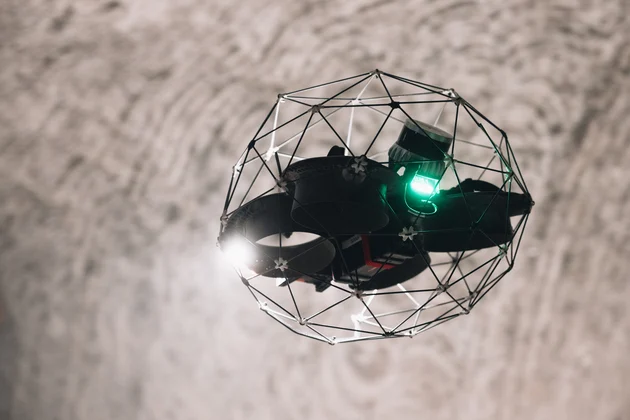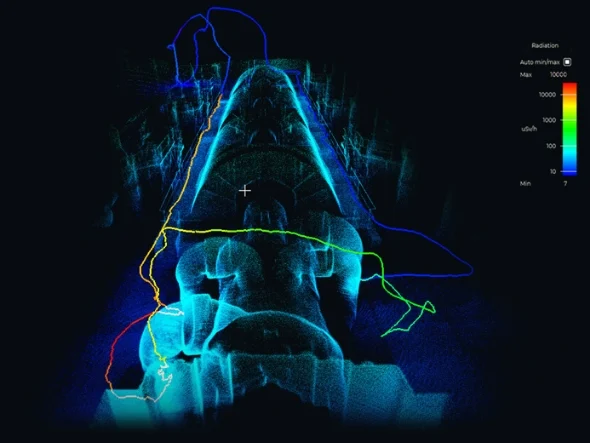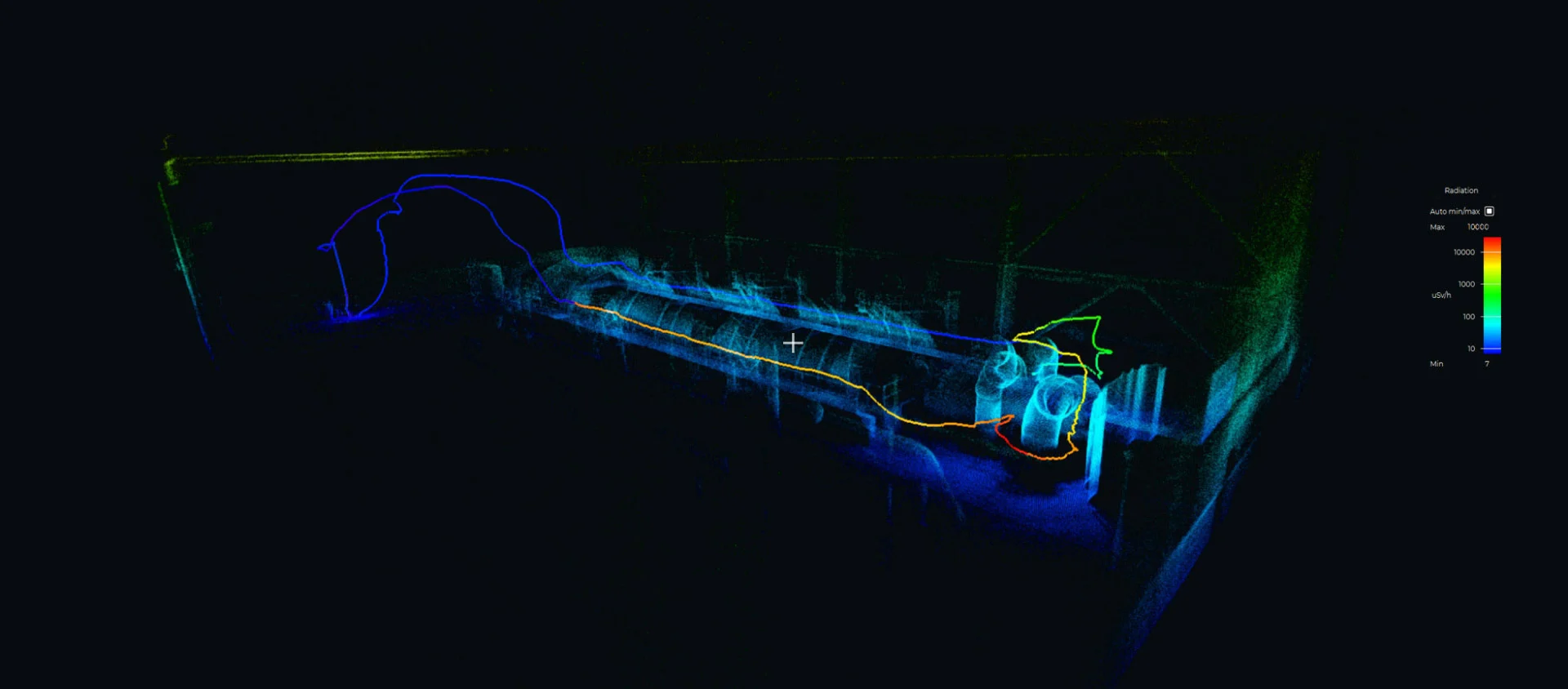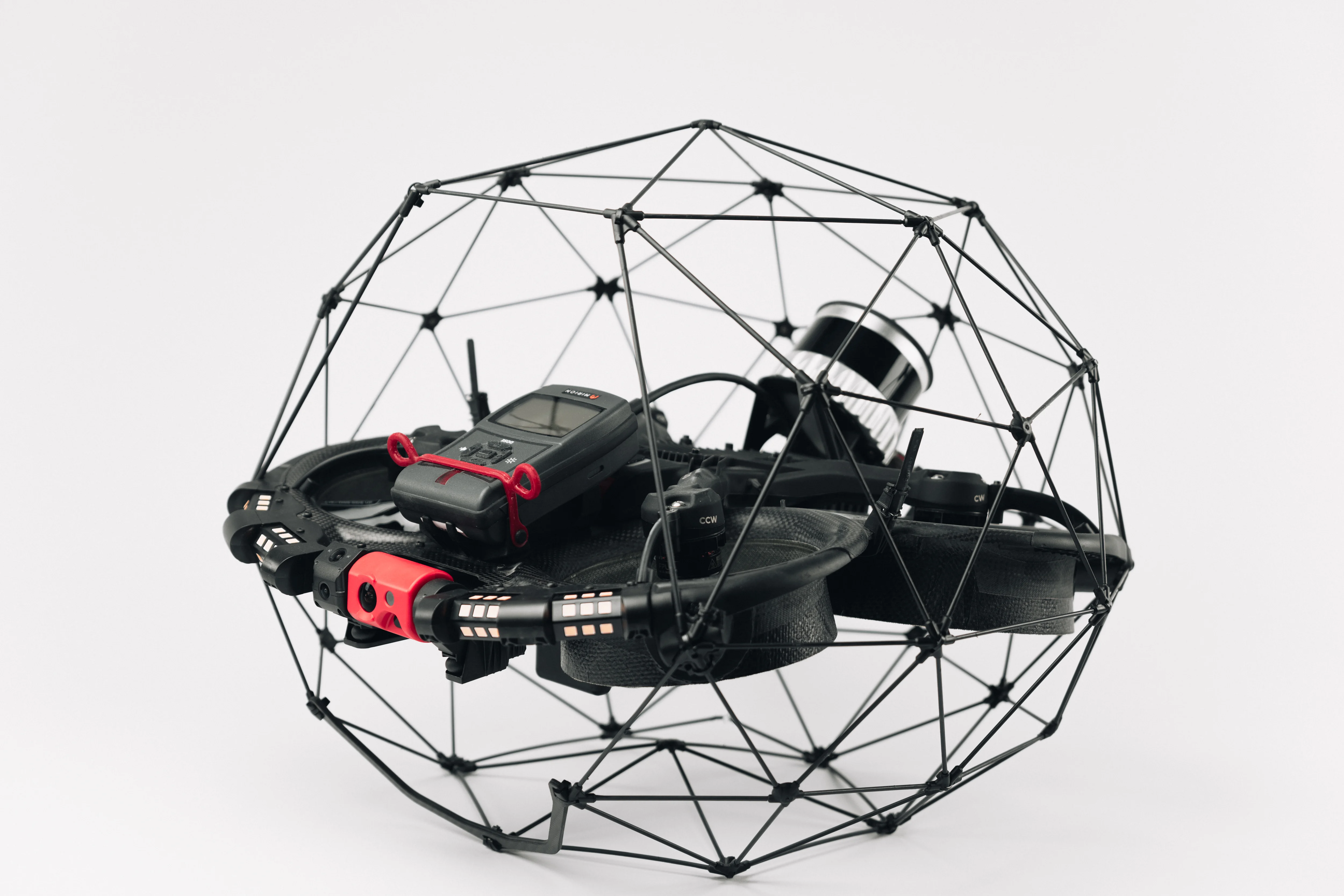Key Benefits at a Glance
|
Access The Elios 3 RAD allows operators to detect radiation and create heat maps without the need for personnel to enter hazardous areas, significantly improving safety and efficiency. |
Comprehensive Data With the RAD payload, drone pilots can collect detailed data to map out radioactive or contaminated zones in tight spaces, providing valuable insights for planning and decision-making. |
Â
|
Site Management The Elios 3 RAD acts as both a scout and inspector, offering critical information that supports site management and helps with operational planning and risk assessment. |
Safety By using the RAD payload, teams can gather essential data without exposing humans to radiation, making operations safer and more efficient. |
What is the Elios 3 RAD?
The Elios 3 RAD is a combination of our modular Elios 3 drone and a specialized radiation detection sensor. This powerful tool enables safe and efficient radiation inspections in challenging environments.
Launched in 2022, the Elios 3 is designed for confined space inspections, whether it's inside pipes or unknown areas in caves. Its protective cage and collision-resistant flight algorithm allow it to navigate tricky spaces confidently. The design ensures that even in the event of a collision, the drone remains stable and functional, making it ideal for operations beyond the line of sight or in dangerous enclosed areas.

The Elios 3 RAD is an essential tool for enhancing safety and accelerating operations related to radiation detection.
In 2023, the Elios 3’s modular payload portfolio was expanded to include the RAD sensor, developed by Mirion Technologies. These experts specialize in creating tools for detecting and measuring radioactive materials, making them a perfect partner for the Elios 3’s inspection capabilities.
The Elios 3 RAD can detect and measure radioactive material found in nuclear power plants, decommissioning projects, or other contaminated sites. Using drones for such inspections offers numerous advantages:
- Enhanced Safety
- Drones can survey areas before humans enter, assessing radiation levels and helping plan safe operations.
- They can monitor changes in radiation levels and provide real-time data to support quick decisions.
- Improved Data Collection
- The Elios 3 RAD can inspect contaminated areas and collect detailed radiological data that was previously hard to obtain.
- It gathers visual, volumetric, and radiological data, supporting the creation of 3D models and comprehensive radiological surveys.
- Better Access
- Drones can access areas that were once difficult or impossible to reach, such as high places or small spaces.
- They can navigate into confined spaces like pipes, provided there is enough room to maneuver (50x50 cm entry, 60x60 cm inspection area).
The RAD sensor used in the Elios 3 RAD is the RDS32-WR from Mirion Technologies, known globally for its expertise in radiological surveys and radiation detection. Their advanced sensors ensure accurate and reliable data collection during inspections.
How Can You Use the Elios 3 RAD for Radioactive Material Operations?
The Elios 3 RAD has a wide range of applications, from inspecting nuclear power plants to aiding in nuclear decommissioning efforts. Here are three key use cases:
Radioactive Waste Warehouse Management
Managing radioactive waste is a complex task, especially when dealing with materials that remain hazardous for thousands of years. In some cases, the Elios 3 has been used to create 3D models inside radioactive environments, avoiding the need to send personnel in.
In storage facilities where waste is sealed in barrels lined with cement, regular monitoring is crucial. The Elios 3 RAD can fly through these warehouses, collecting radiation data and ensuring that exposure levels stay as low as reasonably achievable (ALARA principle).

Here, a turbine deck was scanned using the Elios 3 RAD, showing the drone’s ability to navigate around the entire asset with ease.
By building up a database of readings, teams can track changes in radiation levels over time. This helps in planning maintenance and responding quickly if any issues arise, reducing human exposure while maintaining safety standards.
Site Scans for Radioactive Contamination, Including Powerplants
A simple drone inspection of a nuclear power plant can save up to $500,000. With the Elios 3 RAD, pre-scans can be conducted to assess radiation levels and perform visual inspections before human entry.
For example, if a pipe carrying radioactive waste shows signs of a potential breach, the Elios 3 RAD can quickly assess the area, generate a radiation heat map, and identify the source of the issue. If exposed to radiation, the drone can continue operating until it needs battery changes or data retrieval, minimizing the risk of contamination spreading outside the controlled area.
This sealed operational process provides real-time situational awareness while keeping safety protocols intact. Case studies like this are common in nuclear power plants and decommissioning projects, where the Elios 3 RAD enhances both safety and data collection.
Underground Radioactive Material Storage
Another important application involves underground storage for direct disposal of nuclear waste. These repositories are designed to minimize human exposure by burying waste deep underground. Some are sealed, while others require regular monitoring, such as the Department of Energy site in the U.S., where maintenance work on concrete walls may be necessary.

This scan of a turbine deck with the Elios 3 RAD clearly shows variations in radiation levels across the area.
The Elios 3 RAD can enter these spaces to conduct visual inspections and radiation surveys, helping teams plan maintenance and reduce on-site time. It also ensures that radiation levels are continuously monitored, verifying the stability of stored waste and preventing leaks.
Radioactive waste can include items such as heavy water, spent fuel rods, or even radioactive cement. Managing this material safely and efficiently is made easier with the Elios 3 RAD, which provides accurate and actionable data from hard-to-reach locations.
The Future of Drone Inspections in Nuclear Environments
The use of drones for radiation management represents a major advancement in improving safety within a complex and evolving industry. The Elios 3 RAD is not only useful for nuclear power plants but also for long-term waste management, where radioactive materials remain hazardous for thousands of years.

As many European countries look to phase out their nuclear energy plants, including Switzerland and Germany, the challenge of managing leftover waste will grow. At the same time, the need to inspect current nuclear power plants will remain critical.
With advancing technology, the Elios 3 RAD offers a new way to collect data from previously inaccessible areas while significantly improving safety. It marks a promising step forward in the power generation and waste management sectors.
Discover more about the Elios 3 RAD and how it can transform your operations today.
Cassava Chips,Cassava Chips Making Machine,Cassava Chips Production Lin,Cassava Chips Processing Machine
Zhucheng Lijie Food Machinery Co., Ltd. , https://www.lijiegroup.com